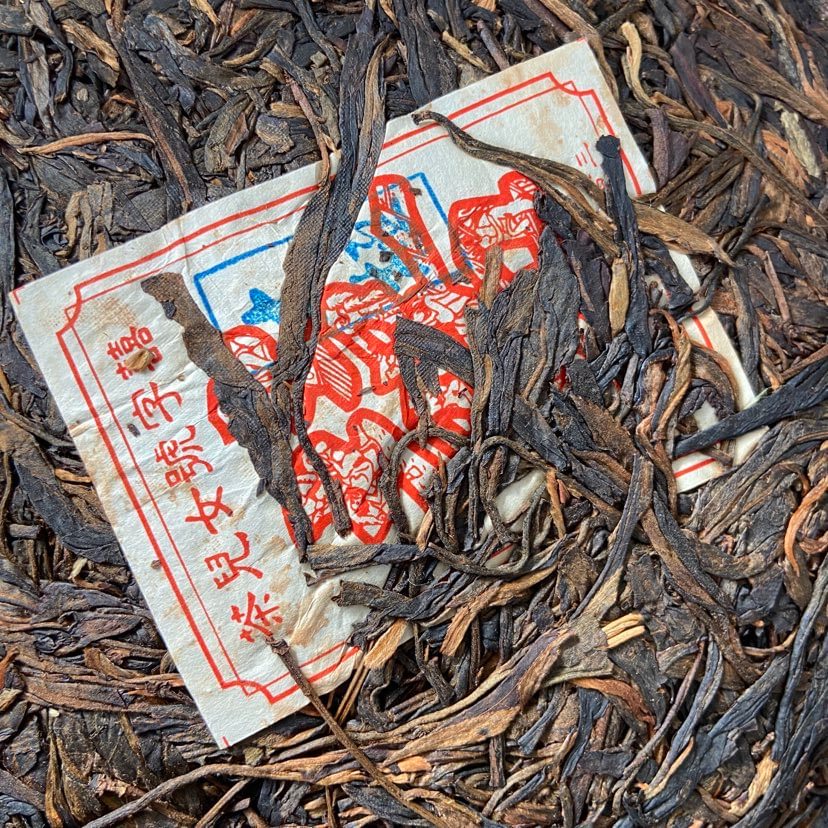This is a short summary of our ideas on what constitutes good tea.
1 Aged is necessary
We propose that aged puerh is much deeper and satisfying compared to young puerh and we think you can tell if you agree with this statement by drinking a few examples of it, the difference is very clear.
2 Clean tea and comfortable Qi
Qi is not at all a feeling of being “high” or caffeine, hence we stress the need for it to be comfortable.
This comfortable feeling is due to pesticide-free, high quality and properly aged tea.
We select tea that’s extremely clean and is comfortable to drink, in the mouth, the body and the mind.
3 Overall trees environment quality is more important than terroir and tree age
While we pursue almost exclusively old and ancient tree (Tiers 3-4-5), there are many other factors that go in “real” ancient tree quality.
Tree age means nothing if pesticide or fertilisers are used, if the varietal is not standard puerh, if the pick is not the first (and ideally yearly only) spring one.
We call these qualities “unmanaged”, eg: growing as wild and without human intervention as possible.
4 What is a good Puerh is relatively obvious
We consider taste qualities (thickness, depth of aftertaste, huigan, complexity, etc…) a natural extension of this three main criteria.
It is our belief that, given a minimum of skill in serving the Tea, individuals can clearly be able to tell what is a superior puerh if they’re given it to try in their preferred setting. It may take a few sessions, but Tea doesn’t lie.
I must stress these are our ideas – you will find tea experts disagreeing about nearly everything. The idea that some tea can be “objectively” better than others is to us quite funny.
This is our point of view (influenced by many others puerh drinkers and producers before us, and by years of drinking the actual teas) and it’s one among many available, you decide if you agree with it or not.
Our sourcing methodology
Each year we still try hundreds of new puerh that claim to be T3/T4 (top 1%-0.1% of produced Puerh). Among this already selected list we choose only around 1-2% to be featured on the website.
Access to the very best quality leaves is generally reserved for producers with tens of years of connections and even then it’s generally a very small amount that gets made (sometimes 10-50 cakes is all that’s made for the very best teas!)
Access to the already produced cakes is also quite hard to get, though a little bit more doable. In fact most of the very best tea is never sold publicly at all. A lot of the T4 and T5 tea we feature we are only able to get because of long years of drinking and understanding puerh to a deep level, relationship, buying tea, introductions and even a bit of good luck!
Most of the puerh that can be found in the west is young puerh leaning towards an oolong (a lot of aromas and sweetness, affectionally called “pulong“) and of course a lot of aged/fresh lower quality factory tea.
Most producers and online tea shops nowadays are stuck in the cycle of producing and selling young tea because of cash flow reasons. It’s extremely capital intensive to make tea now to sell in 10-15 years time.
This means the tea must be processed to be consumed young, and won’t age like traditional puerh would. And anyway, aging tea in the west is very challenging, there’s a lot of experimentation and some people think they can do it, but there’s almost no examples of successfully-transformed tea.
We’re free from market pressure of buying expensive young leaves and instead we select from already semi-aged and aged tea (that can also successfully be dry-stored in the west to continue the aging).
When we offer recent tea, it’s because the quality is stellar (Tier 5 or near) and this tea can only be bought when freshly produced, as nobody else sells it when aged (they keep it for themselves instead).
